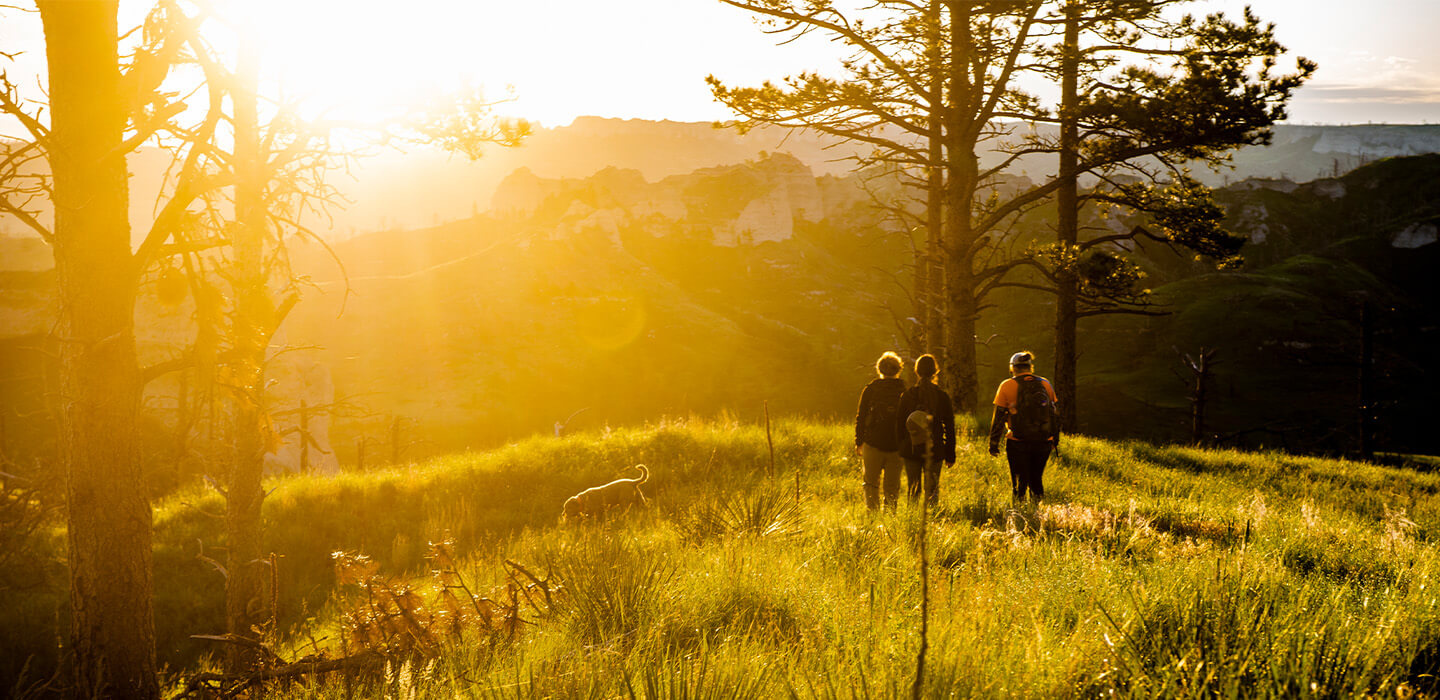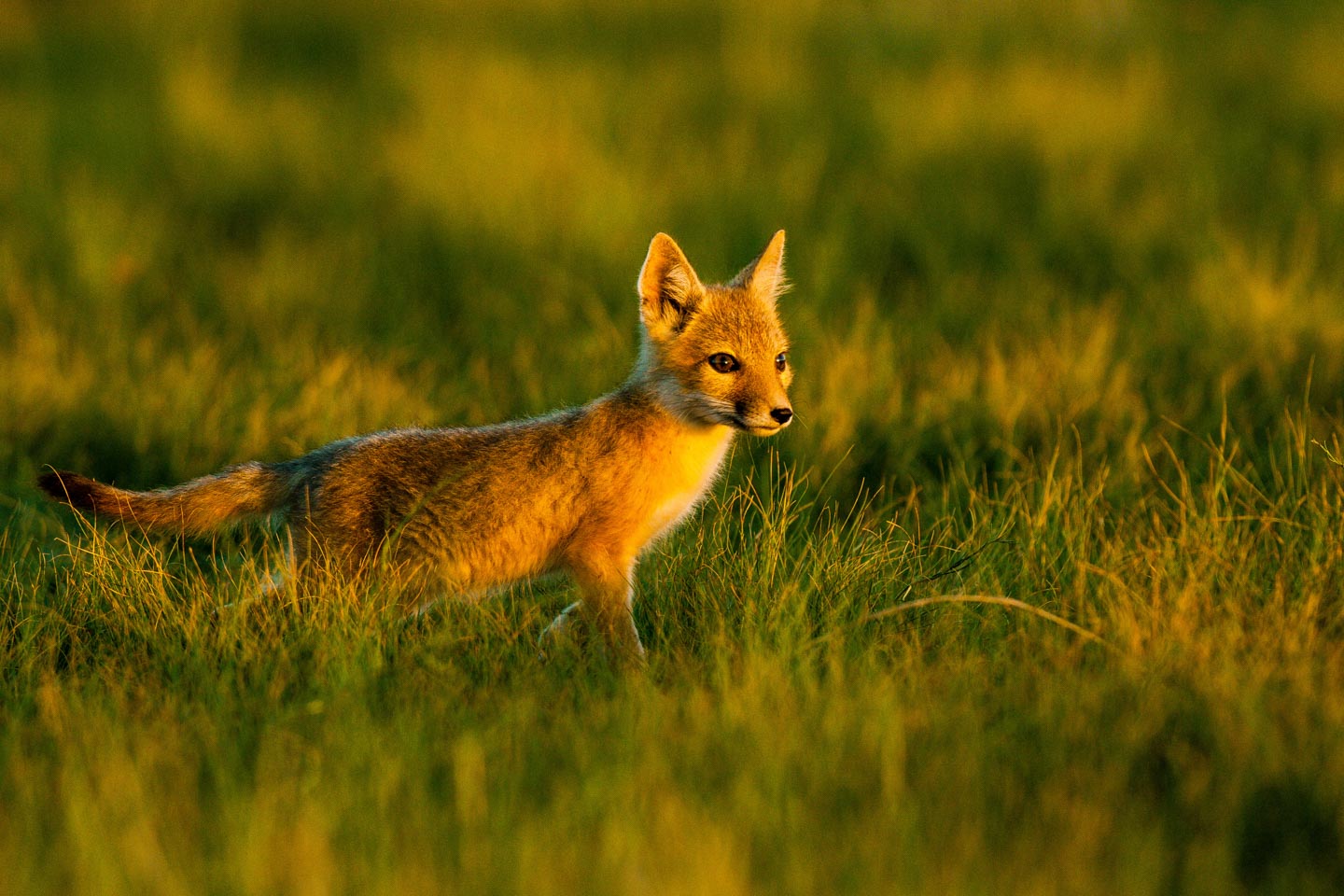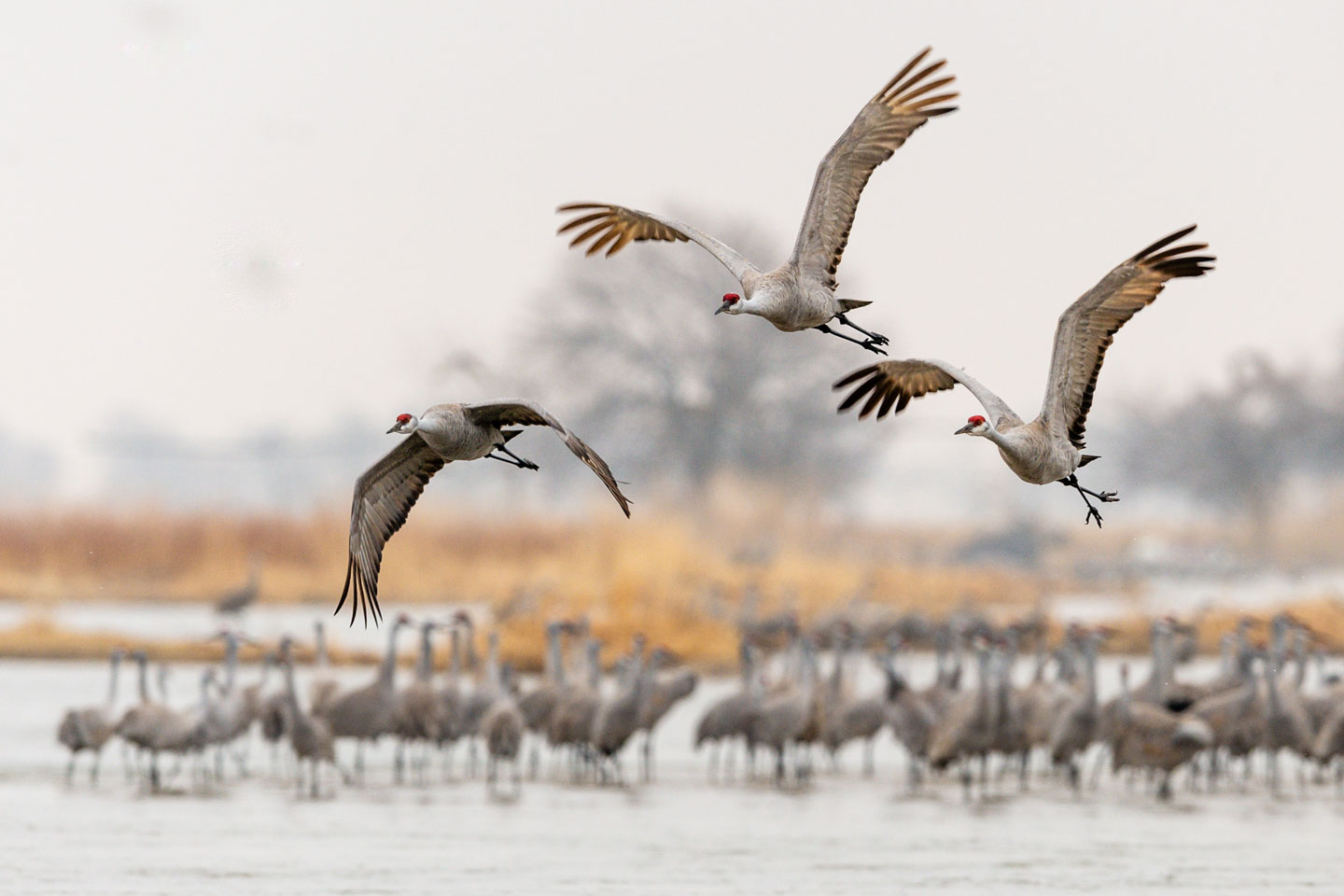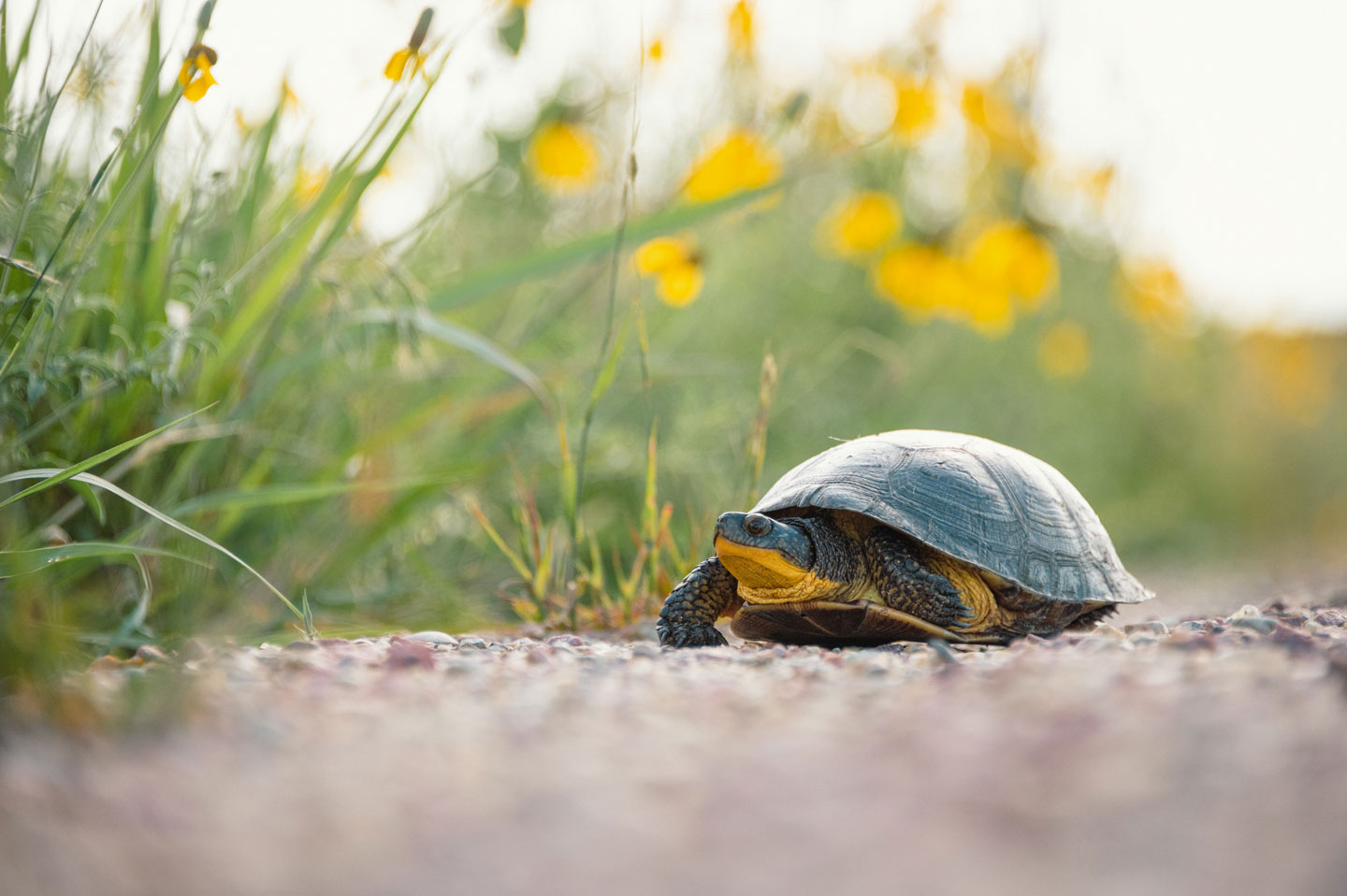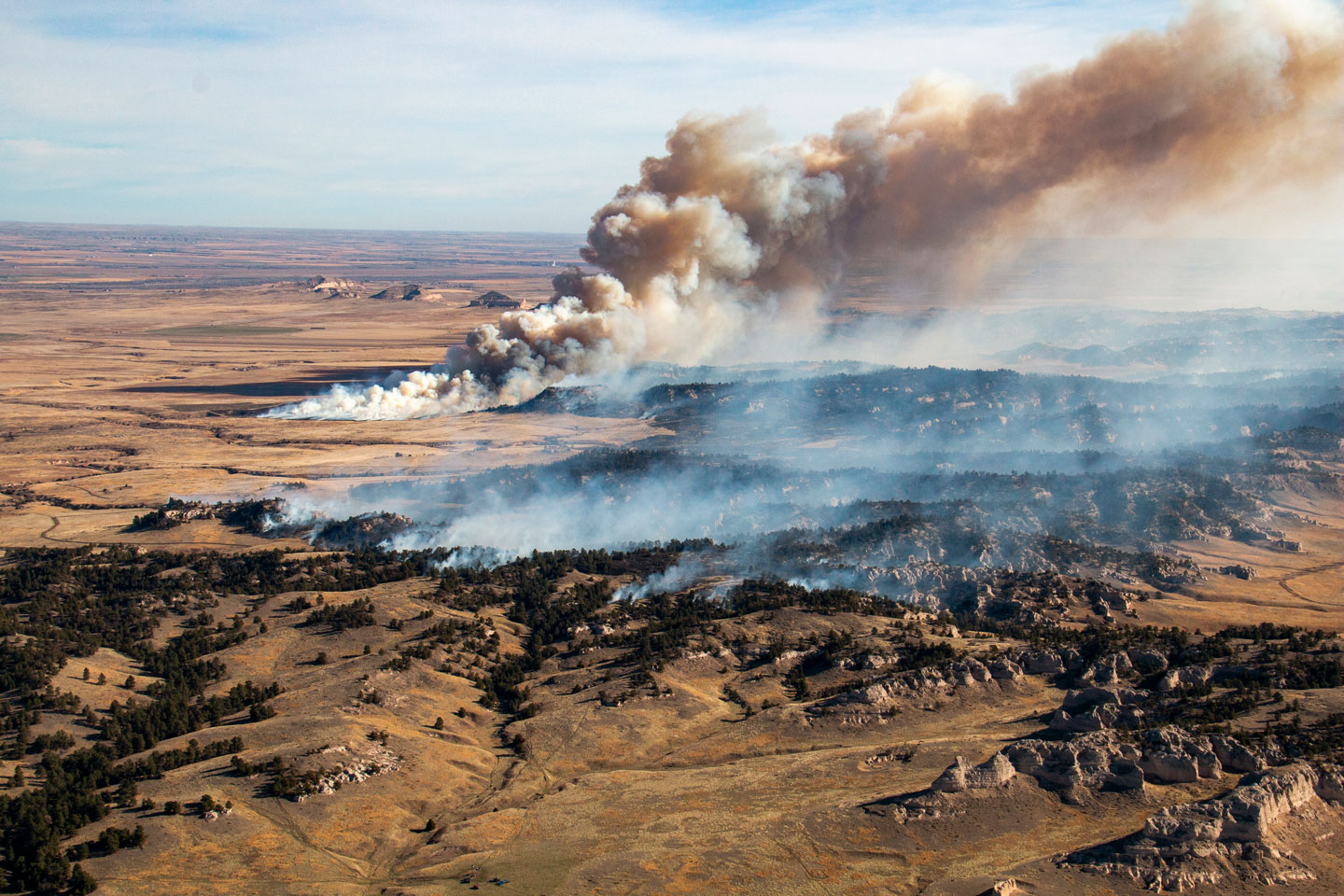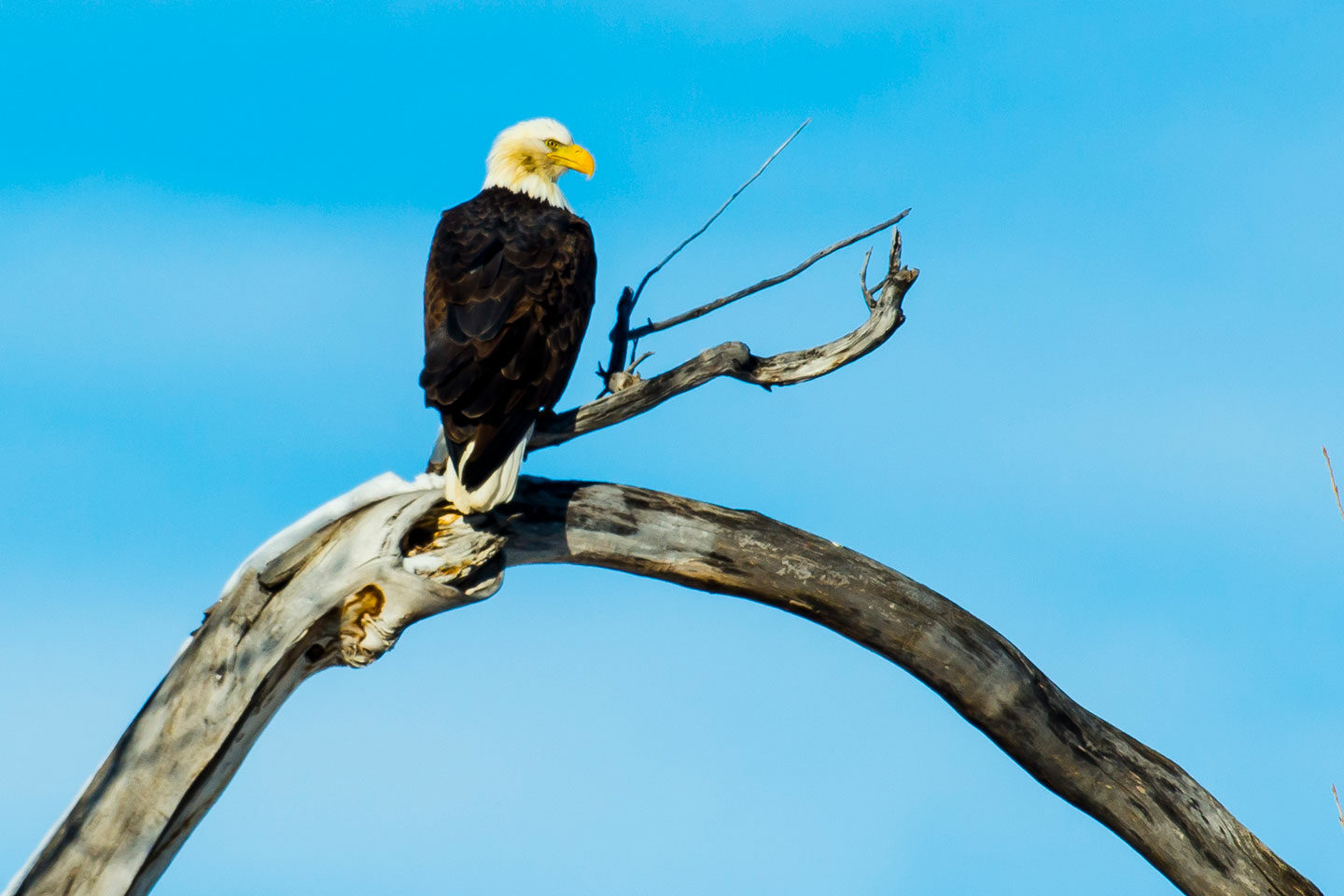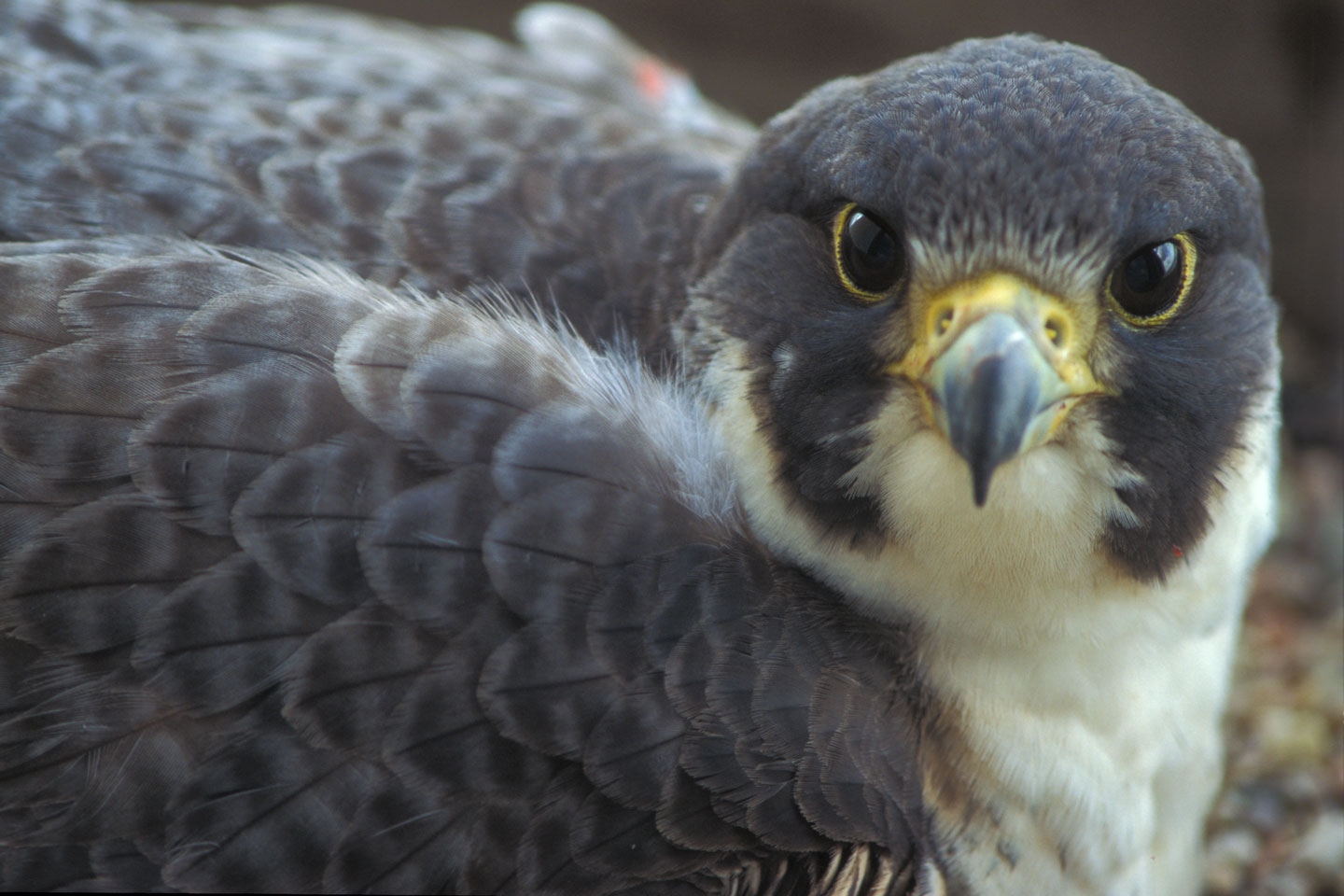Bald eagle

The bald eagle (Haliaeetus leucocephalus) is one of the most identifiable birds in the United States. Adult bald eagles have a distinctive white head, dark brown body and wings, and white tail. Immature eagles are variable, but are mostly dark brown. Bald eagles reach adult plumage at about five years. Adult bald eagles are unmistakable but immature bald eagles are often mistaken for golden eagles.
History and current status
Bald eagles were historically found in all 50 states except Hawaii and nested in 45 of the 48 contiguous states. The species suffered severe population declines across the country in the late 1800s. Land development altered habitat as settlers moved west. Unregulated hunting contributed greatly to the decline of the bald eagle during this time. Later, in the 20th century a new and more serious threat appeared. The use of pesticides like DDT, along with other environmental contaminants, caused major population declines for many species. The bio-accumulated pesticide softened eggshells resulting in low reproductive success.
In 1940 the federal Bald and Golden Eagle Protection Act was signed into law. This law prohibited hunting, possession, or sale of eagles and eagle parts. In response to the continued declines, the U.S. Fish and Wildlife Service listed the species as federally endangered in 1978 under the Endangered Species of 1973). Along with its listing under the Federal Endangered Species Act, the bald eagle was also listed as endangered under the Nebraska Nongame and Endangered Species Conservation Act in 1978. In 1972 the use of several chlorinated hydrocarbon pesticides, including DDT, was banned in all fifty states.
After receiving state and federal protection, and with the banning of DDT and other similar chemicals, bald eagle numbers began to increase. In 1963 there were an estimated 417 breeding pairs in the lower 48 states. By 1997 that number jumped to 7,066 eagles. In response to the increase, the U.S. Fish and Wildlife Service reclassified the species as threatened in 1995, and the Nebraska Game and Parks Commission reclassified the bald eagle as threatened in Nebraska in 2000. The bald eagle was formally removed from the federally threatened and endangered species list in 2007. At the time of delisting, there were an estimated 9,000 breeding pairs in the lower 48 states. In 2008 the bald eagle was removed from Nebraska’s threatened species list.
Bald eagles in Nebraska
In Nebraska, the first modern report of breeding activity was in 1973. However, the first successful modern nesting did not occur until 1991 in Douglas County when an eaglet fledged from a nest near Valley. Since 1991, the number of active nests has increased each year. In 2012 more than 100 active nests were surveyed.
Nebraska’s wintering bald eagle population fluxuates year to year, presumably in response to variables such as food and weather. Even with these variations, the number of bald eagles occurring in Nebraska during the non-breeding season has increased during the last several decades. In the mid 1900s, bald eagles were considered an uncommon migrant and winter resident. Today bald eagles are considered common migrants and winter residents.
From 1980 to 1995 an average of 744 bald eagles were counted in Nebraska during the annual midwinter surveys. From 1996 to 2011 the average increased to 990 bald eagles. Nebraska stopped midwinter eagle surveys in 2013 because the species’ population was determined to be recovered and the species’ winter status could be gleaned from other sources such as Christmas Bird Count data.
Habitat
Nesting or wintering bald eagles are found in close association with water. Rivers, lakes or reservoirs that provide a reliable food source and isolation from disturbing human activities are preferred. Large trees and snags along shorelines provide feeding and loafing perches and potential nest sites. All bald eagle nests in Nebraska have been constructed in cottonwood trees. Larger stands of mature trees that are free from disturbance, and provide adequate perches and protection from the winter elements are needed for communal winter roosting.
During the fall and spring migration when most water areas are ice free and milder weather conditions predominate, bald eagles may be seen along virtually any waterway or impoundment in Nebraska. During the critical wintering period between December 15 and February 20, eagles often concentrate in areas where waters remain free of ice and food is available.
Viewing
Bald eagles can be seen year round across the state of Nebraska. However, winter and early spring is the best time of year to see numbers of Bald Eagles. If you are interested in seeing large numbers of eagles, an excellent strategy is to visit any large reservoir in late February or early March once there is some open water and migrating waterfowl have arrived. Reservoirs that possess some ice are ideal.
In the winter, November through January, concentrations of bald eagles often occur at reservoirs that maintain some open water. Favored sites include Sutherland Reservoir near North Platte, Harlan County Reservoir near Alma, and below Gavin’s Point Dam near Yankton, South Dakota. Lake Ogallala and Lake McConaughy are also a favored site and Central Nebraska Public Power and Irrigation District maintains a viewing building near the dam spillway. The power district also facilitates viewing at its J-2 power plant near Lexington.
Nesting
Resident bald eagles may build or repair nests any time of the year, but activity generally increases from December through February. Nesting bald eagles in Nebraska typically will have eggs by early March. Occasionally inexperienced eagle pairs build a nest but do not lay eggs.
If you discover an active bald eagle nest please do two things:
— View the birds from a distance using a spotting scope or binoculars. Do not disturb the birds; doing so may be a violation of federal law. If you have questions about how close or what activities are acceptable in the vicinity of a bald eagle nest, please contact the U.S. Fish and Wildlife Service Nebraska Field Office at 308-382-6468.
— Contact the Nebraska Game and Parks Commission to report the nest to Joel Jorgensen by email or by phone at 402-471-5440.

